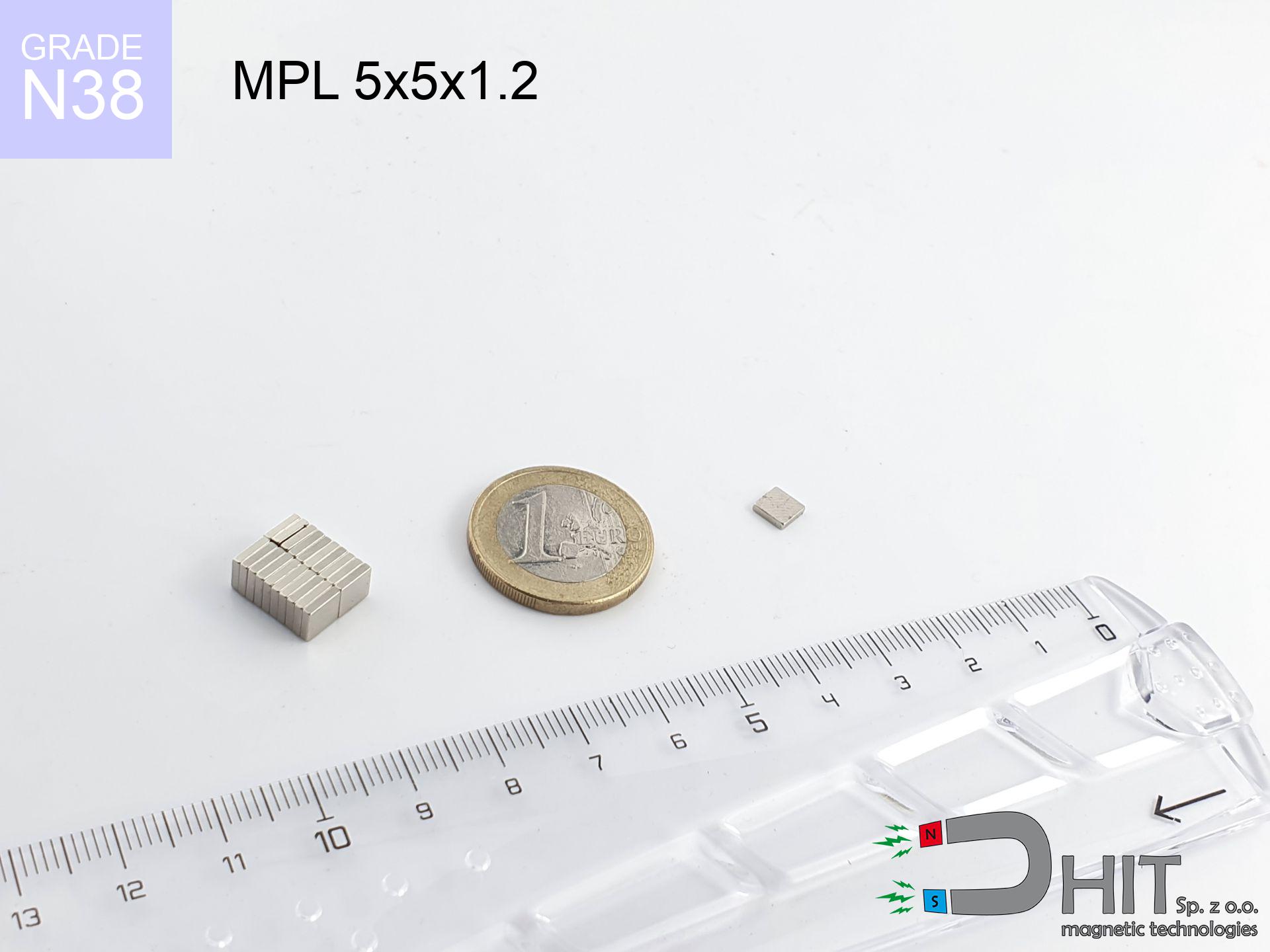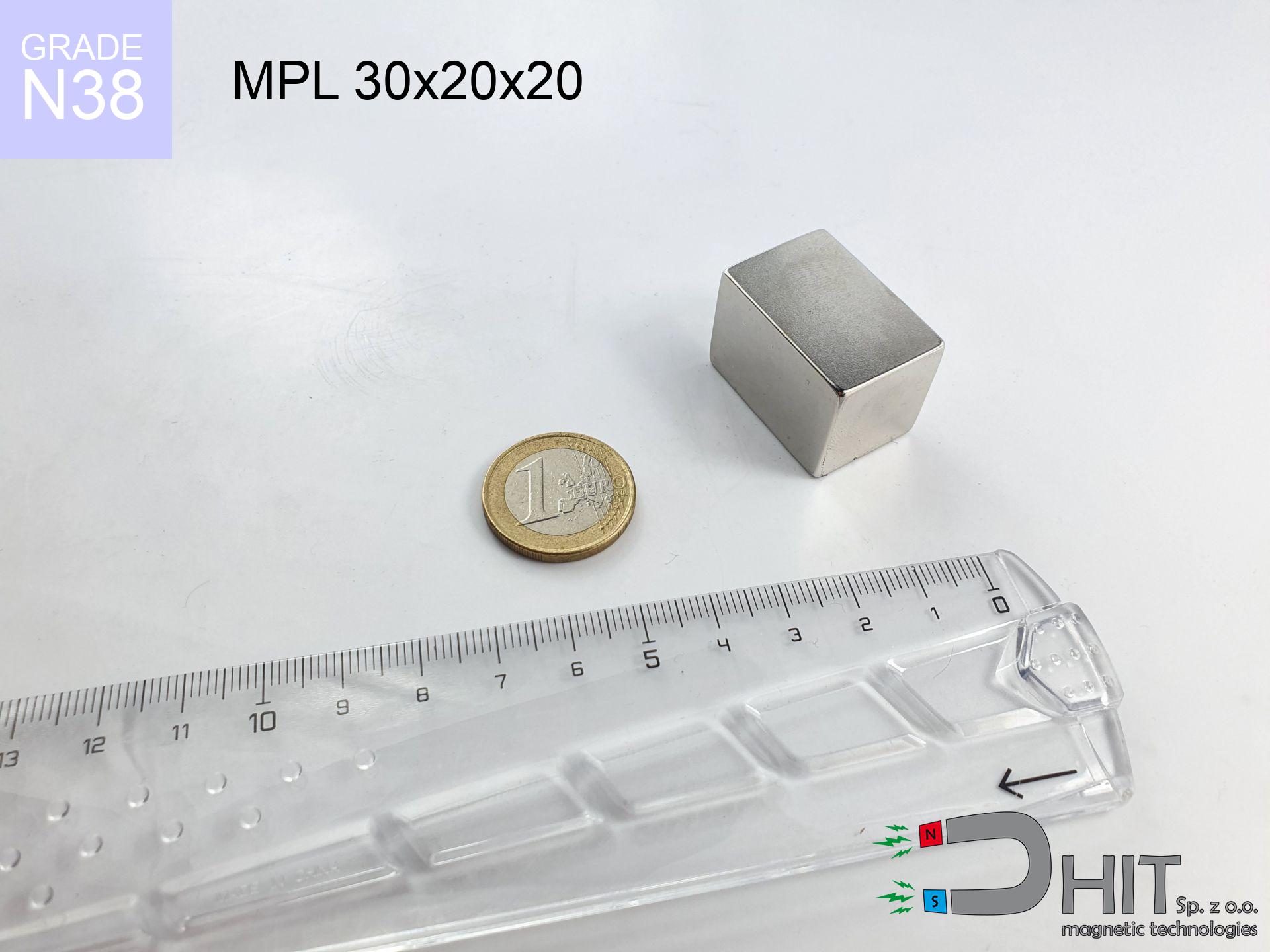UMGW 25x17x8 [M5] GW / N38
magnetic holder internal thread
catalog number 180317
GTIN: 5906301813736
diameter Ø
25
mm [±0,1 mm]
height with thread
17
mm [±0,1 mm]
height
8
mm [±0,1 mm]
capacity ~
17.00 kg / 166.71 N
max. temperature
≤ 80
°C
catalog number 180317
GTIN: 5906301813736
diameter Ø
25 mm [±0,1 mm]
height with thread
17 mm [±0,1 mm]
height
8 mm [±0,1 mm]
capacity ~
17.00 kg / 166.71 N
max. temperature
≤ 80 °C
11.91 ZŁ gross price (including VAT) / pcs +
9.68 ZŁ net price + 23% VAT / pcs
bulk discounts:
need more quantity?Want to talk about magnets?
Call us tel: +48 22 499 98 98 or write through form on our website. You can check the power and the shape of magnet in our force calculator magnetic mass calculator
Orders placed by 2:00 PM will be shipped on the same business day.
Specification: magnetic holder internal thread 25x17x8 [M5] GW / N38
Magnetic properties of the material N38
Physical properties of sintered neodymium magnets Nd2Fe14B
Product suggestions
Advantages as well as disadvantages of neodymium magnets NdFeB.
Apart from immense power, neodymium magnets have the following advantages:
- They do not lose their power (of the magnet). After approximately 10 years, their power decreases by only ~1% (theoretically),
- They protect against demagnetization caused by external magnetic field extremely well,
- In other words, thanks to the shiny coating of nickel, gold, or silver, the element acquires an aesthetic appearance,
- They have exceptionally high magnetic induction on the surface of the magnet,
- Magnetic neodymium magnets are characterized by hugely high magnetic induction on the surface of the magnet and can operate (depending on the form) even at temperatures of 230°C or higher...
- Thanks to the flexibility in shaping and the ability to adapt to specific requirements – neodymium magnets can be produced in various forms and dimensions, which enhances their versatility in applications.
- Key role in modern technologies – are used in HDD drives, electric motors, medical apparatus or other advanced devices.
Disadvantages of neodymium magnets:
- They can break when subjected to a powerful impact. If the magnets are exposed to impacts, we recommend using magnets in a metal holder. The steel housing in the form of a holder protects the magnet from impacts, and at the same time increases its overall strength,
- High temperatures can reduce the strength of neodymium magnets. Typically, after heating above 80°C, most of them experience a permanent loss in strength (although it is dependent on the shape and size). To prevent this, we offer special magnets marked with the symbol [AH], which are highly resistant to high temperatures. They can operate even at temperatures up to 230°C, making them an ideal solution for applications requiring high-temperature operation,
- They rust in a humid environment - during outdoor use, we recommend using waterproof magnets, such as those made of rubber or plastic,
- The use of a cover or a magnetic holder is recommended due to the limited possibilities of manufacturing threads or complex shapes in the magnet
- Potential hazard to health from tiny fragments of magnets are risky, when accidentally ingested, which is crucial in the context of children's health. Additionally, miniscule components of these products have the potential to be problematic in medical diagnosis after entering the body.
Handle Neodymium Magnets Carefully
Make sure not to bring neodymium magnets close to the TV, wallet, and computer HDD.
Neodymium magnets generate intense magnetic fields that can damage magnetic media such as floppy disks, video tapes, HDDs, credit cards, magnetic ID cards, cassette tapes, etc. devices. They can also destroy devices like video players, televisions, CRT computer monitors. Remember not to place neodymium magnets close to these electronic devices.
Keep neodymium magnets away from GPS and smartphones.
Magnetic fields can interfere with compasses and magnetometers used in aviation and maritime navigation, as well as internal compasses of smartphones and GPS devices. There are neodymium magnets in every smartphone, for example, in the microphone and speakers.
Neodymium magnets are among the most powerful magnets on Earth. The astonishing force they generate between each other can surprise you.
Make sure to review all the information we have provided. This will help you avoid harm to your body and damage to the magnets.
It is crucial not to allow the magnets to pinch together uncontrollably or place your fingers in their path as they attract to each other.
Magnets will crack or alternatively crumble with uncontrolled connecting to each other. You can't move them to each other. At a distance less than 10 cm you should hold them extremely strongly.
Dust and powder from neodymium magnets are flammable.
Do not attempt to drill into neodymium magnets. Mechanical processing is also not recommended. Once crushed into fine powder or dust, this material becomes highly flammable.
Neodymium magnets can demagnetize at high temperatures.
Despite the general resilience of magnets, their ability to maintain their magnetic potency can be influenced by factors like the type of material used, the magnet's shape, and the intended purpose for which it is employed.
Magnets are not toys, youngest should not play with them.
Remember that neodymium magnets are not toys. Be cautious and make sure no child plays with them. They can be a significant choking hazard. If multiple magnets are swallowed, they can attract to each other through the intestinal walls, causing severe injuries, and even death.
Magnets made of neodymium are characterized by being fragile, which can cause them to become damaged.
Neodymium magnets are extremely delicate, and by joining them in an uncontrolled manner, they will break. Magnets made of neodymium are made of metal and coated with a shiny nickel, but they are not as durable as steel. In the event of a collision between two magnets, there may be a scattering of fragments in different directions. Protecting your eyes is crucial in such a situation.
Neodymium magnets should not be near people with pacemakers.
Neodymium magnets generate strong magnetic fields. As a result, they interfere with the operation of a pacemaker. This is because many of these devices are equipped with a function that deactivates the device in a magnetic field.
If you have a nickel allergy, avoid contact with neodymium magnets.
Studies clearly indicate a small percentage of people who suffer from metal allergies such as nickel. An allergic reaction often manifests as skin redness and rash. If you have a nickel allergy, you can try wearing gloves or simply avoid direct contact with nickel-plated neodymium magnets.
Please read the article - What danger lies in neodymium magnets? You will learn how to handle them properly.

![practical magnetic holder with threads UMGW 25x17x8 [M5] GW / N38 practical magnetic holder with threads UMGW 25x17x8 [M5] GW / N38](https://cdn3.dhit.pl/graphics/banners/magnet.webp)
![UMGW 25x17x8 [M5] GW / N38 UMGW 25x17x8 [M5] GW / N38](https://cdn3.dhit.pl/graphics/products/um-25x17x8-m5-gw-dob.jpg)
![UMGW 25x17x8 [M5] GW / N38 UMGW 25x17x8 [M5] GW / N38](https://cdn3.dhit.pl/graphics/products/umgw-25x17x8-m5-gw-soh.jpg)





